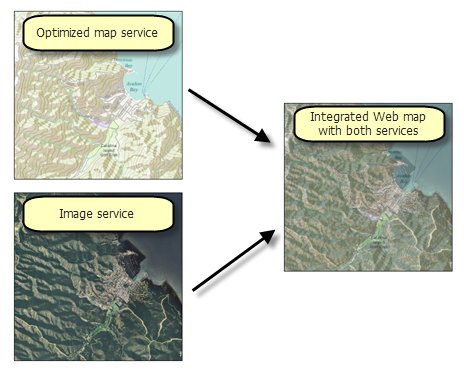You have a raster layer with orthorectification being performed at draw time. The processing time required for the dynamic orthorectification will cause the layer to be drawn more slowly. Raster layers that have already been orthorectified and saved as a dataset will result in better drawing performance than deriving the orthophoto on the fly.
Learn more about orthorectifying a raster dataset
Solutions
Check the drawing performance for your layer or basemap layer in ArcMap. If you are publishing, check the drawing performance for your service in the Preview window.
Learn more about working with basemap layers or previewing your service
- If the performance of the raster is suitable, do nothing and accept the performance as is. You can then mark this warning as an exception in the Prepare window to avoid seeing it again.
- Alternatively, turn off orthorectification for best performance by precomputing the rectification as a new raster dataset for display purposes. You can then rebuild your map layer to use the new orthorectified raster.
More information
ArcGIS provides a series of tools for improving the display of imagery, including using orthorectification for more accurate raster display. Orthorectification is the process of stretching and warping the image to match the spatial accuracy of a map by considering location, elevation, and sensor information. Variations in scale and displacements that occur during initial image collection (for example, due to relief) are eliminated or reduced by the orthorectification process. The product of this process is often referred to as an orthophoto.
There are some valid reasons for computing orthorectification on the fly. One is that you may have a new, more accurate (and higher resolution) DEM that can help to improve the locational accuracy of your orthophoto display.
You have two approaches that you can use to apply orthorectification:
- You can precompute an orthorectified raster and save a new raster dataset for high-performance display. See Orthorectifying a raster dataset displayed in ArcMap for more information.
- You can compute orthorectification of your raster data on the fly as the map is displayed. If ArcMap is used for this task (by setting the raster layer's display properties to apply orthorectification), this will potentially degrade drawing performance of a dynamic map because of the computation time involved. However, you can use ArcGIS Image Server to dynamically compute and serve your raster data using orthorectification (and other image-processing techniques such as pan sharpening) to get fast, scalable performance.
For use in a web map, your web map design will need to change to use ArcGIS Image Server. You would remove image layers from your ArcMap document. In your web application, you would mash up your resulting map service with the image service.
